23+ Top Sales Statistics For 2024: Facts, Trends, Stats
The world of sales is continuously evolving.
If you want to keep pace with the competition, it’s crucial for sales representatives to stay agile and adapt to the ever-changing landscape.
To help you with that, we’ve compiled a list of the 18 top sales statistics you need to know.
These stats will provide useful insight into the current state of sales and help to inform your team’s strategy for the year ahead.
Editor’s picks
- 40% of companies failed to meet their sales goals in 2020. (HubSpot)
- Global eCommerce sales were predicted to reach $4.9 trillion this year. (Shopify Plus)
- Only 25% of buyers prefer meeting face to face. (Kvadrant Consulting)
Top sales statistics
Let’s start by taking a look at some of the most important sales statistics right now.
40% of companies failed to meet their sales goals in 2020
Unsurprisingly, 2020 proved to be a challenging year for sales reps. According to HubSpot’s latest Global Sales Enablement Survey, 40% of organizations underperformed against their revenue goals.
The pandemic presented lots of unexpected challenges for sales teams to overcome. National lockdowns meant consumers spent less in-store and saw businesses marketing and sales budgets tighten and forced many teams to stop their field operations altogether, but it’s not all bad news…
(Source: HubSpot)
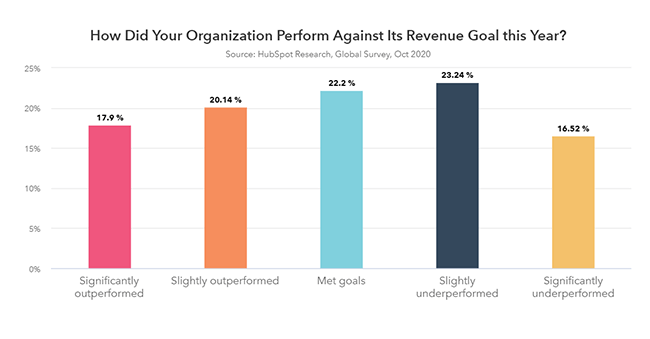
64% of sales leaders who focused on remote sales met or exceeded their sales goals
As this stat proved, 2020 wasn’t a terrible year for everyone. Some sales teams proved nimble enough to adapt to – and even capitalize on – the changes that the year brought. As customers spent more and more time indoors, sales leaders that transitioned to remote sales were able to ride the wave of online spending to great success.
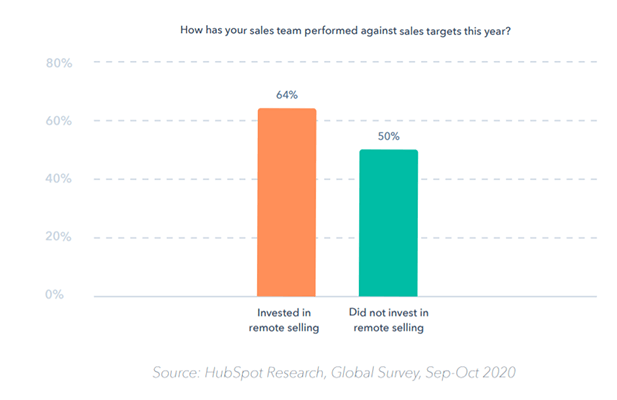
57% of organizations will adopt a hybrid sales model in 2021
The success seen in 2020 by sales leaders that enabled remote work seems to have sparked a shift in how sales teams will operate as we move forward into 2021.
Investing in remote enablement may be difficult work in the short-term, but sales leaders are now seeing the value. Those who failed to switch to remote work swiftly last year will be kicking themselves for missing out on the opportunity to capitalize on the greater remote sales opportunities and looking to incorporate this switch into their 2021 sales model.
As a result, 57% of leaders plan to implement a hybrid sales model, and a further 11% will go fully remote. (Source: HubSpot)

Related Reading: 28 Latest Remote Work Statistics You Need To Know.
At least half of your sales prospects are not a good fit for what you sell
This is according to data from Sales Insight Lab. 71.4% of their survey respondents said that 50% or less of their sales prospects end up being a good fit for what they’re selling.
The upshot of this is clear. And no, it isn’t that teams need to try harder to close more sales. In fact, it’s the total opposite.
The fact that half of your prospects just aren’t a good fit for your product from the start means you can stop trying to close all of your prospects and instead, focus on those that are.
Change the way you approach prospecting to enable your teams to quickly identify who’s a good fit and who isn’t and then focus your efforts only on qualified prospects that are legitimately interested in what you’re selling.
(Source: Sales Insights Lab)
Budget restraints was the top reason deals fall apart
55% of respondents in a Sales Insights Lab survey said that ‘budget restraints’ was the number 1 or number 2 reason that stronger sales opportunities failed. This will come as no surprise to experienced salespeople; the issue of the budget has always been a hurdle for sales reps and will likely continue to be one in 2021 and beyond
But that isn’t to say there aren’t steps you can take to overcome that hurdle. Focus on building real value throughout the discovery conversation so that, when you finally start talking to the prospect about budget, it’s less of an uphill battle.
(Source: Sales Insights Lab)

eCommerce sales statistics
Next, let’s take a look at some eCommerce sales statistics that shed useful light on the state of the internet sales industry this year.
Global eCommerce sales were predicted to reach $4.9 trillion this year
I know, that figure’s tough to wrap your head around. $4.9 trillion cross-border sales is an incredibly impressive figure, especially considering that it was around a quarter as large ($1.3 trillion) just 7 years ago in 2014.
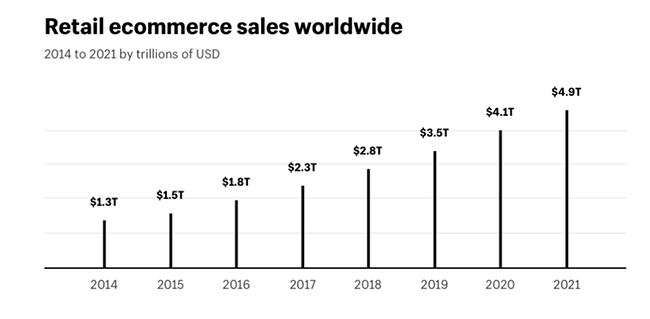
Of course, it’s also fantastic news for sales. The size of the worldwide eCommerce market, and the pace at which it’s growing, means there are near-endless opportunities for online retailers.
And it’s now easier than ever to launch an online store thanks to the abundance of ecommerce platforms available. This includes the likes of Shopify and BigCommerce.
(Source: Shopify Plus)
The number of digital buyers across the world is predicted to reach 2.14 billion this year
Given that there are around 7.6 billion people on earth, that means somewhere between a third and a quarter of the entire global population now shop online. Again, this statistic highlights the enormous scale of eCommerce in 2021. There are plenty of online shoppers out there buying what you’re selling – you just have to know how to reach them.
(Source: Statista)
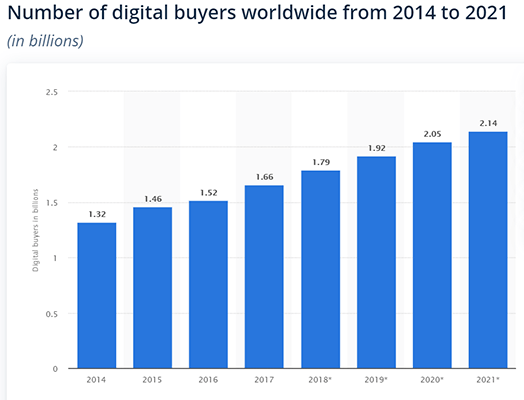
PayPal transactions have 70% greater checkout rates
…compared to non-PayPal transactions, according to a 2013 Nielsen study. Why? Well, it probably has something to do with brand recognition.
PayPal is a well-known brand name worldwide that commands a lot of consumer trust. Smaller, less well-known can ‘borrow’ this trust by including a PayPal payment option on their website. That way, consumers don’t have to worry about putting their card details in on an unfamiliar website. They can checkout securely through the PayPal terminal instead.
The upshot: include a PayPal payment option on your checkout page if you want to maximize sales.
(Source: Paypal)
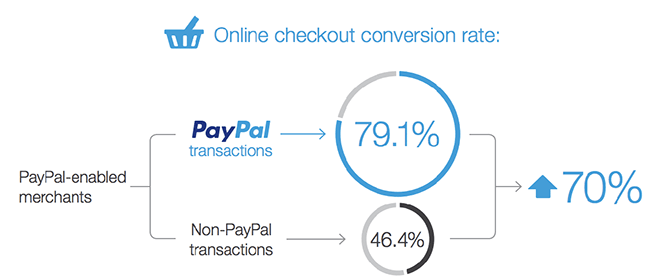
Related Reading: 22 Top Ecommerce Statistics And Trends You Should Know.
Telesales statistics
Telesales is still an extremely popular sales method, despite the increase in the use of other contact methods, so it’s important to know the benefits. Here are some statistics relating specifically to telesales.
27% of sales representatives report that making calls to new contacts is an effective method
In a study conducted by the Rain Group, a good number of sales representatives reported that they still find phone sales methods to be very/extremely effective. 27% of respondents said that calling new contacts was a very effective way of turning leads into sales.
(Source: Rain Group)
69% of buyers accepted at least one cold call in 2019
Although email and social media selling is becoming more popular, cold calling is still a valid and effective option that businesses will continue to utilize in 2021. In a study conducted by Rain Group in 2019, it was found that 69% of people accepted one or more cold calls in 2019.
That means that despite consumers being aware of cold calling as a marketing strategy, they are still open to being contacted about sales by phone.
(Source: Rain Group)
The phone is the most important tool for sales, according to 41% of sales reps
Contrary to popular belief, phones still make up an essential part of any sales strategy. Even in the new age of digital selling, 41% of sales reps still say that their phone is the most important tool they have. This was closely followed by CRM tools and emails.
(Source: Sales Insights Lab)

People are most receptive to cold calling between 4 pm and 5 pm
If you’re using cold calling as the main part of your sales strategy, it’s important to know how to optimize your processes. Timing is key to generating leads and making sales when cold calling.
According to a Linkedin article, the definitive best time to cold call is between 4 PM and 5 PM, closely followed by the 8-9 AM timeslot. And, the worst time to cold call is proven to be around lunchtime, or between 1 PM and 2 PM.
(Source: Linkedin)
92% of customer interactions are telephone-based
Although email is fast becoming the most popular way to communicate, calls are still the predominant way that businesses interact with customers. According to a Linkedin article, a whopping 92% of interactions were telephone-based.
(Source: Linkedin)
Sales challenges statistics
Mastering your business’s sales strategy can be tough. Here are some statistics relating to the most common sales challenges business are facing.
31% of small businesses said that competing with low-cost providers was their biggest selling challenge
Small businesses find making sales particularly difficult as competing with low-cost providers with lower-cost manufacturing makes it harder for them to compete when it comes to price. 31% of business cited this as their biggest challenge, closely followed by challenges like “creating competitive differentiation” and “adding value to customer conversations.”
(Source: Richardson)
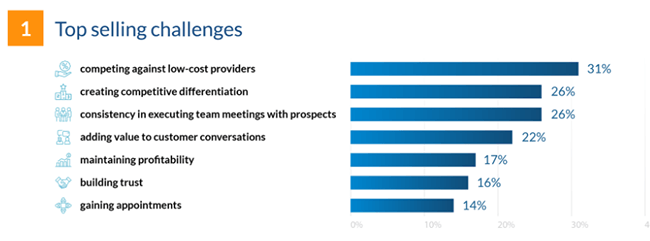
Only 46% of sales representatives report having sufficient data insights about buyer intent
Customer data is key for representatives. It helps them to stay informed about customers’ propensity to buy and make smart, time-efficient decisions when prospecting. Despite 85% of salespeople reporting that data insights make their efforts more effective, only 46% have access to sufficient data.
(Source: SalesForce)
1 in 5 businesses say they don’t have enough resources to process sales efficiently
According to a Data Dwell study, 19% of businesses find it challenging to find content and resources to help turn leads into buyers.
(Source: Data Dwell)
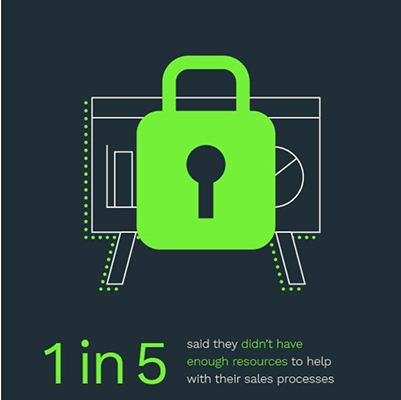
Only around ¼ of all sales emails actually get opened
Although email marketing and sales is an effective method, so many companies use this strategy, that many consumers automatically ignore sales emails. According to a blog published by Topo, only 23.9% of sales emails actually get opened.
(Source: Topo)
Only 25% of buyers prefer meeting face to face
According to an article published by Kvadrant Consulting, 75% of buyers prefer not to meet with salespeople face to face. This makes it more challenging for salespeople to make connections with potential buyers.
(Source: Kvadrant Consulting)
Wrapping it up
And that’s it! The most important sales statistics you should pay attention to.
Use these statistics so you and your team can make effective changes to your sales strategy and accelerate growth.
Related Reading:
- Digital Marketing Statistics: 75 Stats, Facts & Trends
- Marketing Automation Statistics: The Definitive List
- 22 Shopping Cart Abandonment Statistics To Boost Your ROI
- 29 Influencer Marketing Statistics To Inform Your Strategy
- 42 Top Social Media Statistics: Usage, Demographics, Trends
- 40+ Customer Service Statistics And Trends
- 37+ Customer Retention Statistics: The Definitive List
